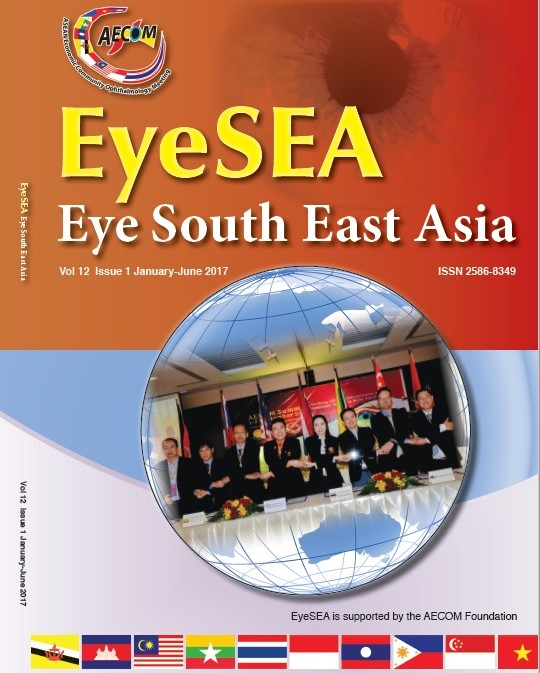An outlook on outreach vision screening
Main Article Content
Abstract
Background: Alport syndrome, a hereditary nephritis accompanied by high tone sensorineural deafness and distinctive ocular signs, was first reported in the early 1900s by Dr. Cecil A. Alport in 1927. Studies have demonstrated that it is caused by a genetic defect within one of the alpha chains of the type IV collagen, the major component of basement membranes (BM) in the kidney, inner ear, and eye. Pathologic biopsy studies and genotyping play an important role in evaluating patients with Alport syndrome. Difficulties still exist to confirm the diagnosis of Alport syndrome (AS) exactly (Xu et al. 2010).
Case Report: A middle aged male presented with bilateral reduced vision. His vision was not improved with refraction and anterior lenticonus and retinal flecks were significant during dilated fundus examination. We noticed facial puffiness and pallor. Then we obtained hypertension and reduced hearing from history. There was no known family history. We decided to do the investigations to confirm the diagnosis of Alport syndrome and to know the severity.
Conclusion: This is an unexpected case seen in the outreach vision screening. With the help of slit- lamp findings, Alport syndrome was diagnosed and associated nephropathy and sensorineural deafness were referred for the appropriate treatment. It is fascinating that eye screening can save a life for lifelong treatment.
Keywords: Anterior lenticonus, Alport Syndrome, Hereditary Nephritis, X-linked Alport syndrome (XLAS), autosomal recessive Alport syndrome (ARAS), autosomal dominant form (ADAS)
Article Details
References
Alport syndrome, 2017, from https://ghr.nlm.nih.gov/condition/alport-syndrome.
Chuenkongkaew W, Lertrit P, Suphavilai R, 2004, A Thai patient with Leber’s hereditary optic neuropathy linked to mitochondrial DNA 14484 mutation, Southeast Asian J Trop Med Public Health, vol 35, pp 167-168.
Kashtan C, MD, 2017, Alport Syndrome, from rarediseases.org/rare-diseases/alport-syndrome/
Kashtan C, 2017, Alport syndrome: facts and opinions[version 1; referees: 2 approved], from F1000Research2017, 6(F1000 Faculty Rev):50 Last updated: 17 JAN 2017
Mukerji N, Dodson K, 2002, X-linked Alport Syndrome: A Case Report, The Internet Journal of Nephrology, volume 1 number 1.
Ruangvaravate N, MD, Samsen P, MD, Thuangtong A, MD, Chanvarapha N, MSc, 2012, Achromatopsia: The First Case Report in Thailand, J Med Assoc Thai Vol. 95 Suppl.4, S147-S150
Xu JM, Zhang SS, Zhang Q, Zhou YM, Zhu CH, Ge J, Wang L, 2010, Ocular manifestations of Alport syndrome, Int J Ophthalmol, Vol. 3, pp 149-151.
Yao XD, Chen X, Huang GY, Yu YT, Xu ST, Hu YL, Wang QW, Chen HP, Zeng CH, Ji DX, Hu WX, Tang Z, Liu ZH, 2012, Challenge in pathologic diagnosis of Alport syndrome: evidence from correction of previous misdiagnosis, Orphanet journal of rare diseases, from http://www.ojrd.com/content/7/1/100.


